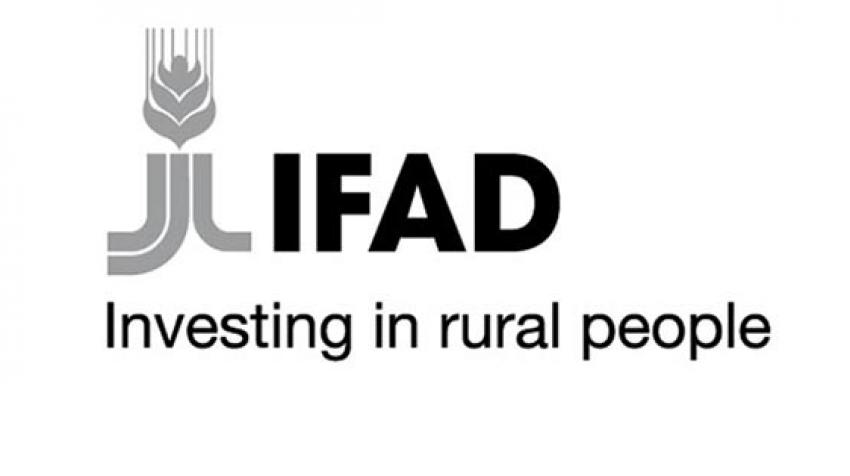Focal point
Location
The International Fund for Agricultural Development (IFAD), a specialized agency of the United Nations, was established as an international financial institution in 1977 as one of the major outcomes of the 1974 World Food Conference. The Conference was organized in response to the food crises of the early 1970s that primarily affected the Sahelian countries of Africa. The conference resolved that "an International Fund for Agricultural Development should be established immediately to finance agricultural development projects primarily for food production in the developing countries". One of the most important insights emerging from the conference was that the causes of food insecurity and famine were not so much failures in food production, but structural problems relating to poverty and to the fact that the majority of the developing world's poor populations were concentrated in rural areas.
IFAD's mission is to enable poor rural people to overcome poverty.
IFAD is dedicated to eradicating rural poverty in developing countries. Seventy-five per cent of the world's poorest people - 1.4 billion women, children and men - live in rural areas and depend on agriculture and related activities for their livelihoods.
Working with rural poor people, governments, donors, non-governmental organizations and many other partners, IFAD focuses on country-specific solutions, which can involve increasing rural poor peoples' access to financial services, markets, technology, land and other natural resources.
Resources
Displaying 91 - 95 of 102Towards Land Degradation Neutrality for Improved Equity, Sustainability, and Resilience
Objectives
Enhance climate-resilient food production and nutrition in productive landscapes through nature-based solutions in support of Cabo Verde’s voluntary LDN targets
Other
Note: Disbursement data provided is cumulative and covers disbursement made by the project Agency.
Target Groups
Degraded lands in Cabo Verde provide many important ecosystem goods and services. These lands provide not only economic benefits, but also social and environmental services. Global environmental benefits related to the establishment of an effective Land Degradation Neutrality system that balances gains and losses of productive land and supports resilient and productive landscapes with a mosaic of land uses and diverse livelihood opportunities will also generate socio-economic benefits for the local communities in the project targeted areas. These benefits include: ? Strengthening of value chains and improvement of market access for revenue and income generation, with improved employment opportunities for rural women and youth in particular; ? Improved food, nutritional and water security for vulnerable rural households that are often headed by women, strengthening their human rights to access to food and water; ? More resilient and equitable livelihoods for both women and men; ? Reduced risk (natural disasters, market volatility, access to information and finance) related to investing in value-chain development, restoration and SLM on degraded lands; and ? Improved access to finance for smallholders for investing in new business plans related to SLM for achieving LDN.
SAVING KEY HABITAT FOR MIGRATORY LANDBIR
General
The Gran Chaco Americano is a vast, relatively flat, wooded region occupying south-eastern Bolivia, western ..Paraguay and northern Argentina. In Paraguay, it covers the lands west of the Paraguay River and is characterized ..by tropical savannas, dense thorn-scrub forest and more open vegetation in areas with sand dunes. Due to increased ..deforestation rates in the past decade, the Paraguayan Chaco is undergoing a rapid change, with the remaining ..forest patches being so small that they are essentially islands in an entirely man-made landscape. Lack of a regional ..vision regarding land use management and land protection is one of the main problems to get to a sustainable ..balance of the use of the Chaco. Many Neotropical Migrants depend on the Paraguayan Chaco during migration and ..overwintering including 14 species of Neotropical Migratory Landbirds that depend on the forests in the Chaco and ..of which several are in steep decline. Rapid action is required as a recent analysis of economic drivers indicated a ..realistic possibility that all suitable land will have been transformed for cattle production by 2025. Guyra Paraguay ..will advance long-term conservation of Neotropical Migratory Landbirds in the Paraguayan Chaco through targeted ..habitat management and protection, support for more effective land-use planning, and public outreach. To achieve ..this, Guyra Paraguay aims to: 1) improve management and effective protection of Neotropical Migratory landbird ..habitat in six protected areas in the Paraguayan Chaco; 2) assess and evaluate the impact of land use change in ..the Paraguayan Chaco on Neotropical migratory landbird species through, monitoring, data compilation and ..analysis; 3) stimulate sustainable land use and strategic land planning by working with local stakeholders ..(authorities, ranchers, land owners) and, 4) raise awareness and built support for the conservation of the ..Paraguayan Chaco and its migratory species.
REINFORCING INDIGenOUS-LED MANAGEMenT AND INTER-INSTITUTIONAL COOPERATION IN THREE CORE FOREST BLOCKS FOR TAPI
General
The purpose of this project is to strengthen indigenous and community guard programs, bolster inter-institutional application of the Spatial Monitoring and Reporting Tool (SMART), and to protect and restore indigenous lands in the Rama-Kriol Territory of Nicaraguas Indio Maz Reserve, the Bribri and Cabecar communities of Costa Ricas La Amistad Caribbean Conservation Area, and Gunayala and adjacent Mamon Valley in Panama
Enhancing Namibia’s capacity to establish a comprehensive Transparency Framework for Monitoring, Reporting a
Objectives
To enhance Namibia’s institutional and technical capacities to establish a comprehensive Transparency Framework for Monitoring, Reporting and Verification (MRV) of climate actions and to report on NDC implementation under the Paris Agreement
Other
Note: Disbursement data provided is cumulative and covers disbursement made by the project Agency.
Target Groups
The project is aligned with GEF focal area CCM-3-8, i.e. “Foster enabling conditions for mainstreaming mitigation concerns into sustainable development strategies through capacity building initiative for transparency.” The project will contribute to the improvement of local and global environmental conditions through enhancing transparency related to GHG emissions, impacts of climate change, and mitigation and adaptation actions in the country. Strengthened MRV will allow the government to better assess investments in mitigation and adaptation measures, and may result in more efficient expenditures on climate-related activities, which in turn could optimize reductions in GHG emissions. Improved MRV will also allow the government to compare the relative costs and benefits of mitigation and adaptation measures so that it will be able to highlight and support cost-effective, high-impact adaptation measures. This project contributes to the country’s commitments under the UNFCCC to enable it to address climate change considerations (mitigation of GHG emissions and reduction of vulnerability to climate change). project activities contribute directly to increasing the extent to which state institutions base their actions on the principals of sustainable development and increasing the capacities of public actors to implement, monitor, and evaluate policies related to environment, climate change and nature protection. The domestic MRV system to be developed under Component 3 is designed to avoid duplication and result in an efficient system that will reduce time burdens and costs to state institutions in data collection and analysis. The project will also assist the country in achieving the SDG 13 by supporting the integration of climate change measures into national policies, strategies and planning; building knowledge and improving education, awareness-raising and human and institutional capacity on climate change mitigation, adaptation, impact reduction and early warning, and promotion of mechanisms for raising capacity for effective climate change-related planning and management in the country. The project will also contribute to achieving SDG5 by supporting empowerment of women in decision-making, land ownership and through gender-sensitive budgeting.
Implementation of Armenia’s LDN commitments through sustainable land management and restoration of degraded
Objectives
To support the national efforts to implement the LDN targets of Armenia through sustainable land management and restoration of degraded landscapes
Other
Note: Disbursement data provided is cumulative and covers disbursement made by the project Agency.
Target Groups
Degraded lands in Armenia, including forest land, pastures and cropland provide many important ecosystem goods and services important for food and water security as well as for conservation and recreation. These lands provide not only economic benefits, but also quality of life and heritage values cherished by many people. Global environmental benefits related to the establishment of an effective Land Degradation Neutrality system that balances gains and losses of productive land and supports resilient and productive landscapes with a mosaic of land uses and diverse livelihood opportunities will also generate socio-economic benefits for the local communities in the pilot districts of Lori and Syunik related to: · Strengthening of value chains and improvement of market access for revenue and income generation, with improved employment opportunities for rural women and youth in particular · Improved food, nutritional and water security for vulnerable rural households that are often headed by women, strengthening their human rights to access to food and water · More resilient and equitable livelihoods for both women and men · Reduced risk (natural disasters, market volatility, access to information and finance) related to investing in value-chain development, restoration and SLM on degraded lands · Improved access to finance for smallholders and small-scale livestock owners for investing in new business plans related to restoration and SLM for achieving LDN





